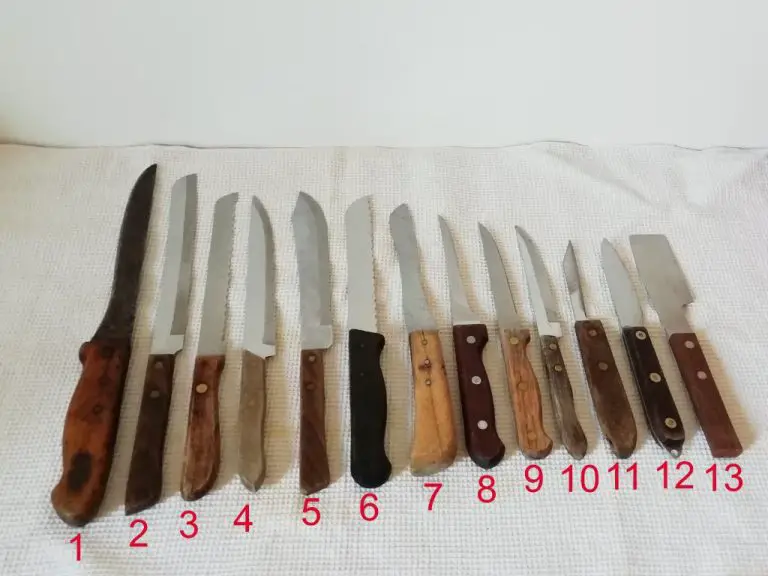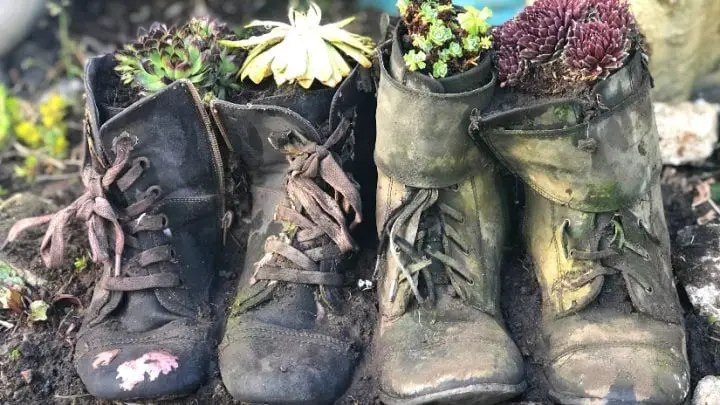Can You Make A Ring At Home?
Making rings at home has become an increasingly popular hobby and small business pursuit. The handmade jewelry market was valued at around $29 billion globally in 2020, with Etsy being one of the most popular places to sell homemade jewelry online (Source: https://medium.com/@fashioncourty772/handmade-jewelry-market-analysis-1a4f9ee69264). Creating rings yourself allows you to fully customize designs, choose quality materials, and make jewelry that reflects your personal style. Ring making is accessible for beginners since you can start with simple wire rings or upcycled rings from found objects before moving onto more advanced metal smithing and gemstone setting techniques. This guide will provide tips and instruction for making rings at home, from choosing materials, tools, and techniques to designing, sizing, and finishing your creations.
Benefits of Making Rings at Home
Making your own rings at home offers several advantages over purchasing pre-made rings. Some of the key benefits include:
Cost Savings – Designing and crafting your own rings is often much less expensive than buying rings from a jeweler or retailer. You can purchase supplies like metal sheets and gems in bulk at lower costs. This allows you to make multiple custom rings for a fraction of the normal price.
Customization – When you make rings yourself, you can create completely one-of-a-kind designs tailored exactly to your style, size, and preferences. You have total creative control over every aspect like the metal, gems, engraving, and more.
Fun Hobby – Many people find metalworking and jewelry creation to be deeply enjoyable and relaxing hobbies. The entire process of designing, measuring, cutting, setting stones, and polishing is extremely rewarding. It provides an outlet for creativity and self-expression.
Tools and Materials Needed
To get started making rings at home, you’ll need some basic tools and materials. Some essential ring making tools include:
Jeweler’s saw – This fine-toothed saw allows you to precisely cut shapes out of sheet metal (Ring Making Tools).
Files – Needle files help shape and smooth the metal once it’s cut (Jewelry Making Tools: An Introduction).
Mandrel – This tapered steel rod allows you to form the ring band into a perfect circle.
Metal wire – Silver, gold, and copper are common ring metals. Choose a gauge that matches your design.
Gems – Diamonds, sapphires, and other natural stones add sparkle. Cubic zirconia is an affordable diamond alternative.
Other useful tools include pliers, tweezers, hammers, and a magnifying visor to see small details. A jeweler’s workbench helps keep everything organized.
Once you have the basics covered, you’ll be ready to start sawing, filing, soldering and setting stones!
Selecting Ring Metal
When making a ring at home, one of the most important decisions is choosing the right metal. There are several factors to consider when selecting ring metal, including durability, appearance, cost, and metal allergies.
Some popular metals for homemade rings include:
Gold
Gold is a classic metal choice for rings due to its beautiful yellow color and shine. It is very durable and long-lasting. Gold comes in different karats, with 14k and 18k gold being common choices for jewelry. A higher karat means the gold is more pure. Gold is hypoallergenic for most people (source).
Silver
Sterling silver is another top option for ring making. It has a bright white color and is very affordable compared to gold. Sterling silver contains 92.5% pure silver mixed with copper (source). It does require more maintenance than gold since it can tarnish over time.
Copper
Copper has a unique reddish-orange color and is a versatile, inexpensive metal to work with. The main downside is that copper can tarnish and oxidize over time, so rings need regular polishing. Still, the rustic look of oxidized copper is appealing to some jewelry makers.
Choosing Gems and Stones
When making your own ring at home, you have many options for gems and stones to set in your ring. Some popular choices include:
Diamonds – Diamonds are highly desirable for their brilliance and durability. You can purchase loose diamonds and set them into a custom ring setting. Diamonds come in various cuts, clarities, colors and carat sizes. Make sure to source diamonds from a reputable dealer.
Gemstones – Colorful gemstones like sapphires, rubies and emeralds add striking beauty to a ring. Other gemstone options include topaz, tourmaline, amethyst, garnet, moonstone, opal and more, all available in a range of hues. Consider a birthstone or favorite gemstone for personal meaning.
Semiprecious stones – Semiprecious stones like lapis lazuli, turquoise, jade and others provide an affordable alternative to fine gems. These colorful stones can be just as beautiful in the right setting.
The key is choosing a stone that aligns with your budget and style preferences. When setting the gem or stone, make sure it is properly secured in the mounting so it won’t fall out with wear. Take care to properly protect softer stones from damage or scratching.
Ring Sizing and Measurement
Getting the right ring size is crucial for comfort and ensuring your homemade ring fits properly. An ill-fitting ring can be loose and fall off or too tight and uncomfortable to wear. Measuring ring size accurately will ensure your efforts in crafting a ring are rewarded with a piece you’ll love wearing.
To measure your ring size at home, you’ll need a ring sizer, pie’c of string, or strip of paper. Wrap the material snugly around the base of the finger where you want to wear the ring, being careful not to pull it too tight. Mark where the material overlaps and measure the length in millimeters or inches using a ruler. Match your measurement to a ring size chart like this one from Real Simple to identify your size.
You can also print a ring sizer with various ring sizes labeled to wrap around your finger. This allows you to quickly identify which ring size fits best without needing to take measurements. King and Curated provides a downloadable ring sizer you can use.
Ring sizes generally range from 4 to 13 for U.S. sizes. Have your ring size on hand when selecting materials for crafting as you’ll need to tailor the band width and diameter to fit. Buy extra material as a precaution to allow for adjustments if your initial sizing is off.
Basic Ring Making Techniques
When making rings at home, some of the basic techniques you’ll need to learn include cutting, soldering, setting stones, and polishing. Cutting allows you to size and shape your metal into the desired ring form. Soldering joins metal components together with a metal alloy that melts at a lower temperature. Setting stones securely holds gems or crystals in place on the ring band. Polishing makes the ring smooth, shiny, and complete.
To cut metal, you’ll need jeweler’s saw blades and a saw frame to hold the blades taut. Lubricating the blade makes cutting easier. Take care to cut slowly and steadily along your marked line. For soldering, prepare the joint surfaces so solder can flow between them. Use solder carefully with a torch to avoid overheating. Let pieces cool completely before further handling. Setting stones requires making prong mounts or bezels to hold them. Use proper pliers to bend prongs over the stone. For polishing, start with coarse grit sandpaper or files. Move to finer grits for a smooth finish. Use polishing paste on buffing wheels for a mirrored shine.
Some good resources for learning basic ring making techniques include the jewellery making basics section at https://www.kernowcraft.com/jewellery-making-tips/jewellery-making-basics and the five basic jewellery making techniques article at https://www.livingareallife.com/posts/five-basic-jewellery-making-techniques.
Advanced Ring Making Techniques
Once you have mastered the basics of ring making, you can move on to more advanced techniques to take your creations to the next level. Three popular advanced techniques are casting, stone setting, and engraving.
Casting allows you to create a custom ring design from scratch. The process involves creating a model of the ring, forming a mold, and then pouring molten metal into the mold. Once cooled, the metal holds the shape of the ring design. Casting requires specialized equipment, but offers limitless design possibilities. Refer to tutorials from Jewelry Making Journal for guidance on basic casting techniques.
Setting gemstones and other materials into a metal ring adds color, sparkle, and meaning. Common setting techniques include prong, bezel, flush, and tension. The Gems Society provides an overview of setting styles to help choose the right one. Take precautions when handling gems and use proper setting tools.
Engraving involves etching designs, letters, or textures onto the metal surface. This can be done with specialized engraving tools, or simple DIY tools like a Dremel or nail. Engraving takes practice to master consistent depth and line quality. Start with simple textures and shapes. Refer to Jewelry Making Journal’s engraving techniques for more tips.
Ring Design Inspiration
Making rings at home let’s you get creative with personalization and different styles. Some inspiration for customizing DIY rings includes:
- Wrapping the band with wire, leather, or thread for a unique texture (https://www.pinterest.com/dianad9/diy-rings/)
- Incorporating charms, beads, or small gems into the band design (https://www.estatediamondjewelry.com/diy-homemade-rings/)
- Using hammered, twisted, or braided metal techniques
- Spelling out words, names, or dates on the band
- Inlaying wood, stone, or enamel into metal for contrast
- Texturing the metal with engraving, etching, or stamping
- Shaping the band into unique forms like hearts or knots
- Choosing birthstones or crystals that have personal meaning
- Mixing metal colors like silver and gold
The possibilities are endless! Customizing a homemade ring makes it more meaningful.
Safety Tips
When making rings at home, there are some important safety tips to keep in mind. Proper protective gear and safe handling of chemicals are crucial.
Wear safety goggles to protect your eyes from flying debris or chemicals (Basic Safety Principles for Jewelers). Use a respirator mask or proper ventilation when soldering or working with chemicals to avoid inhaling fumes. Wear heavy gloves when handling hot metals or chemicals like pickle (Safety in the Small Jewelry Studio).

Read product labels carefully and follow instructions when using chemicals like fluxes, patinas, or polishes. Only use chemicals in well-ventilated areas. Dispose of chemicals properly. Keep a fully stocked first aid kit on hand in case of minor burns, cuts, or irritation. Take breaks to avoid fatigue and work carefully.



